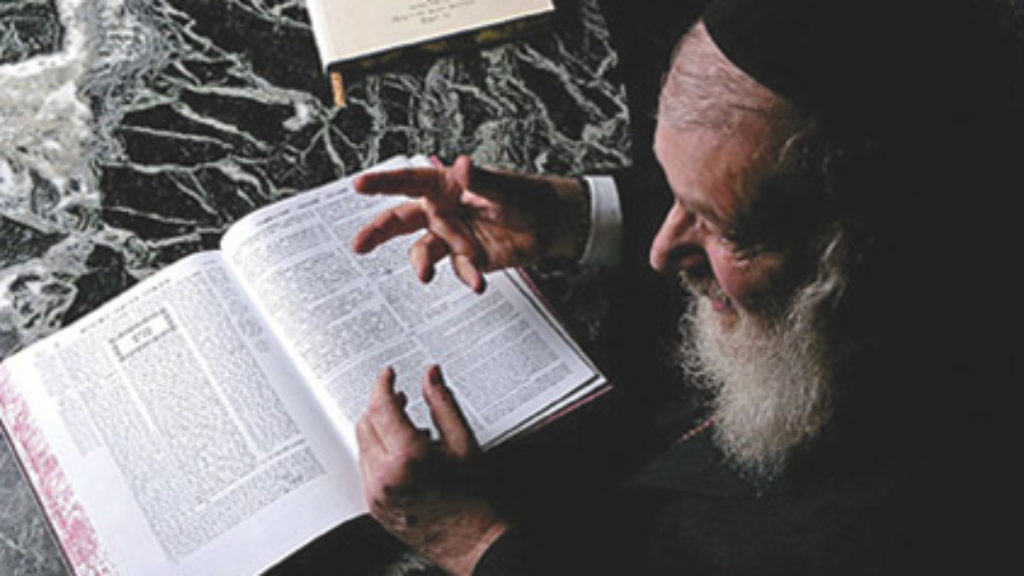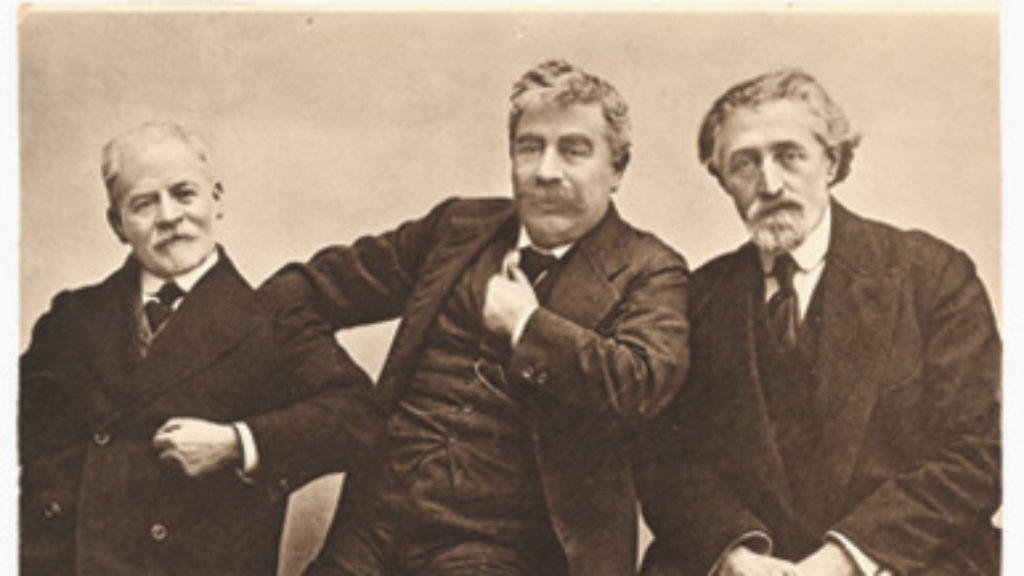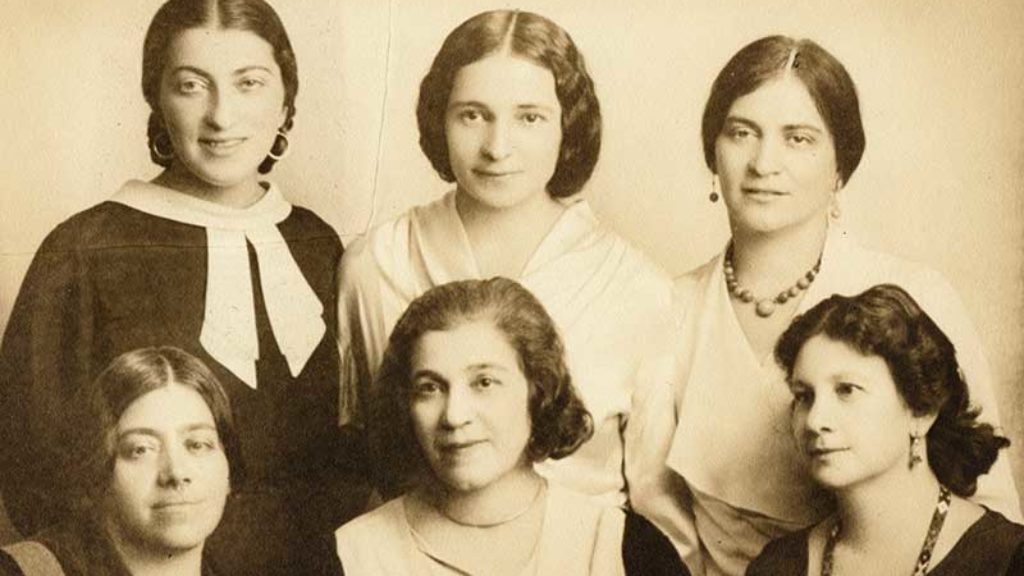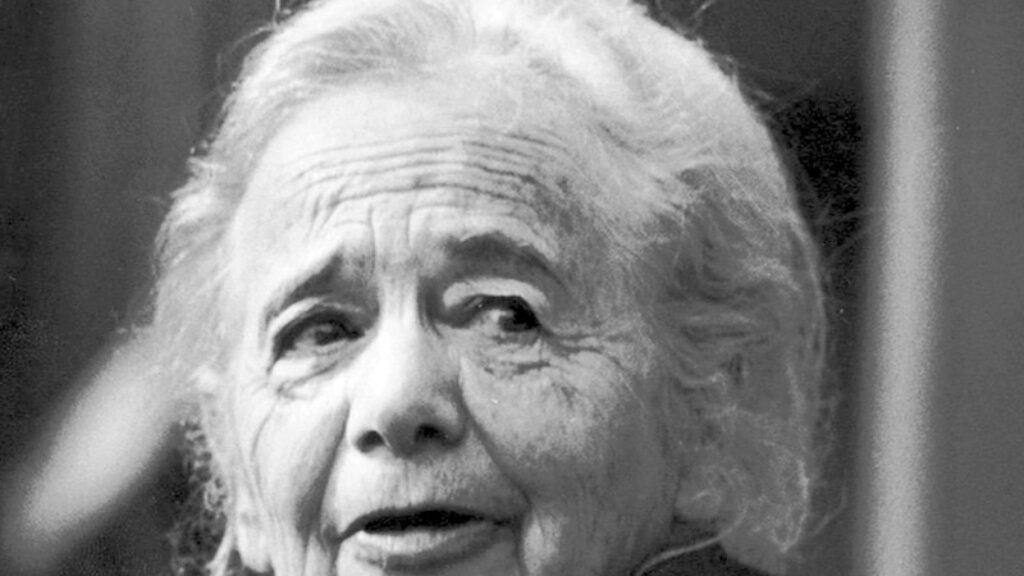No Empty Place
On May 11, 1772, when the rabbinic and lay leaders of Vilna announced the first major ban (herem) against the so-called new Hasidim, they were charged with disrespect toward talmidei hakhamim (rabbinic scholars), laxity about the proper times of prayer, and bizarre ecstatic prayer practices, including somersaults. The herem described the Hasidim as wicked, and their odd ritual behavior as typical of “abominable heretics [ke-to’evot ha-apikorsim].” Indeed, the movement was, according to its accusers, virtually an attempt to found a new religion, but, strikingly, no strictly theological accusations were made. In particular, the mitnagdim, or rabbinic opposition, did not object to the Hasidic view of God’s relation to the universe. Though the Hasidim were pantheists (or panentheists) through and through, raising this accusation was of little potency, since variants of pantheism had been openly and enthusiastically endorsed, not only by numerous kabbalists, but also by other major medieval Jewish authorities, such as Solomon ibn Gabirol and Abraham ibn Ezra.
While in Western Christendom the Church establishment repeatedly and harshly condemned pantheism as either heresy or idolatry, things were very different in the Jewish sphere. Relying on the equality of the numeric values (gematria) of the Hebrew words for God (Elokim) and nature (teva), medieval and early modern kabbalists often asserted their shared identity. Remarks such as “He is everything, and in Him is Everything [Hu ha-kol, u’vo ha-kol]” or “God fills all the worlds and encompasses all the worlds [memale kol almin ve-sovev kol almin]” are commonplace in medieval and early modern rabbinic literature.
While pantheism was certainly not a Hasidic innovation, some early Hasidic writers were extremely daring in stating their views. Thus, Rabbi Ya’akov Yosef of Polnoye, one of the closest disciples of Hasidism’s founder, the Ba’al Shem Tov, rather shockingly asserted that since God completely fills all the worlds, every idol must too be divine. Nonetheless, the accusation that Hasidic pantheism amounted to nothing short of gross idolatry did not appear until 1796, in a public letter written by Rabbi Eliyahu of Vilna, the famous Vilna Gaon, shortly before his death. In the letter, the Gaon compared the Hasidic leaders to the worshipers of the golden calf and described the movement as a cult of “every tree and every stone,” through their misreading of Ezekiel 3:12: “Blessed be the Glory of God from His Place,” and their radical understanding of the notion that God is the place of the world.
The rift between the Hasidim and their opponents was further exacerbated in the spring of 1800 when Rabbi Avigdor of Pinsk, a disciple of the Gaon, filed a complaint against the Hasidim to the Russian tsar, Paul I, which alleged theological as well as political impropriety among Hasidic leaders. In the complaint, Rabbi Avigdor cited a passage from the writings of Rabbi Ya’akov Yosef, according to which man should aspire to merge himself completely with God during prayer. If this were possible, Rabbi Avigdor quipped, the Hasidim “should have become immortal.” Unlike in the 1772 condemnation of Hasidism, the issue of pantheism took on a significant role in Rabbi Avigdor’s complaint. Interestingly the theological absurdities he found in this position were strikingly reminiscent of early 18th-century condemnations of Spinoza’s equation of God and nature by Pierre Bayle and others. Indeed, when the philosopher Salomon Maimon wrote his famous autobiography some 20 years after having visited the early Hasidic court of the Maggid of Mezheritch, he coined the term “acosmism” to describe the Maggid’s teaching that only God truly exists, while the world we experience is mere appearance—and ascribed it to Spinoza as well.
Following Rabbi Avidgor’s complaint, several Hasidic leaders in the Russian Empire, including Rabbi Schneur Zalman of Liadi, the founder of Chabad Hasidism, were arrested and interrogated. The Russian authorities concluded that the complaint was part of an intra-Jewish dispute of little interest to them and of no legal merit.
The most substantial theoretical response to Hasidism from a leader of the mitnagdic—literally, opposition—movement did not appear until 1824, three years after the passing of its author, Rabbi Chaim of Volozhin. Nefesh HaChaim, which plays on the author’s name in characteristic rabbinic fashion and means “The Life’s Soul,” is a masterpiece of the Lithuanian-mitnagdic outlook. Rabbi Chaim, who was widely considered the Gaon’s closest disciple, established the illustrious Volozhin Yeshiva, which would become the model for most other modern Lithuanian yeshivot, in 1802. His book famously argued for the supreme value of “Torah lishmah,” or Torah study for its own sake, and remains a key text in modern yeshivot even if, as Avinoam Fraenkel notes in the
introduction to his massive new annotated bilingual edition, it is often read rather selectively, with little emphasis on its kabbalistic theology.
Rabbi Chaim had a mild disposition, and the attitude of Nefesh HaChaim toward the Hasidim was very different from the harsh late 18th-century attacks of his great teacher and colleagues. In fact, there is no explicit mention of Hasidism or Hasidic texts in Nefesh HaChaim. Nonetheless, it is clear that he is working through the same set of theological issues, nor can one mistake the object of Rabbi Chaim’s critique when, for instance, he criticizes those whose spiritual preparations for prayer lead them to pray long after the halakhically set time. One may even discern a not inconsiderable sense of irony in his comparison of this practice to the behavior of a person “who blows Shofar with tremendous fervor on Seder Night . . . or one who eats the olive quantity of matzah on Rosh Hashana.” Still, the tone of Rabbi Chaim’s critique is far from personal, and although his main polemical target has been taken by many to be Rabbi Schneur Zalman of Liadi and his book Likutei Amarim, popularly known as the Tanya, neither he nor any other Hasidic leader or text are ever mentioned directly.
Rabbi Chaim’s stance toward the relationship between God and the world in Nefesh HaChaim is intriguing, and it is of central concern to Fraenkel. In one passage, Rabbi Chaim comes close to the Hasidic assertion that only God exists and that the finite things of the universe are nullified within it, but at the very last moment, he seems to pull back: “God is the Soul and the Ultimate Source of the power and life force which [all the worlds] receive from Him . . . just like a soul is distributed within a person’s body—for even though it is distributed within each specific part of him, it nevertheless cannot be said that the body is nullified to it in a way that it appears not to exist at all.”
Yet, just a few pages later, Rabbi Chaim writes in a manner that is almost indistinguishable from a Hasidic approach while discussing God as the place (makom) of the universe. (Here, incidentally, I will reproduce Fraenkel’s unusual bullet-point approach to making the Nefesh HaChaim’s often run-on, sometimes digressive sentences accessible to English readers.)
- but it is also appropriate and fitting that with his will [a person] should completely nullify all the powers of the supernal and lower worlds, and also his own powers/abilities, to the extent that it appears [to him] that they do not exist . . .
- and that he should concentrate his heart in prayer only on the Makom [place] of the Universe alone, that He is the Unified One, the Infinite One, Who fills All of this world, and all of the worlds, and that there is no place devoid of Him.
This sounds very much like the Hasidic approach to prayer, but in a parenthetical passage I have elided, Rabbi Chaim characteristically adds that one should aspire to this state of consciousness during study as well as prayer. In doing so he quotes a talmudic passage that says, “Words of Torah are only sustained with one who considers himself to not exist.” The talmudic sage Rabbi Yochanan was playing on a verse of Job to make a psychological point about humility rather than a metaphysical one about the illusion of worldly existence, but Fraenkel is right to translate it this way in the context of Nefesh HaChaim. Indeed, for Rabbi Chaim, it is this loss of self in the act of Torah study, rather than prayerful rapture, which is the highest and most sublime
human activity.
For both Rabbi Chaim and his Hasidic opponents, the mystery of how an infinite divine being created a finite physical world is answered by the 16th-century kabbalist Rabbi Isaac Luria’s doctrine of tzimtzum, or divine self-limitation. As Fraenkel writes near the beginning of his 757-page second volume, which is almost entirely given over to explicating the place of this idea in Nefesh HaChaim and documenting its sources, the concept of tzimtzum “explains how it can be that the existence of an All Permeating and Infinite God is totally concealed from us in this physical world.”
In the celebrated formulation of Luria’s student Rabbi Chaim Vital, before the creation of the world “the sublime and simple light filled all of reality.”
There was no empty place or vacant space, but everything was filled by that simple light . . . then, the Ein-Sof [the Infinite] contracted itself at the very central point, and contracted that light to surround the central point, and left an empty place and a vacant space . . . in which all the worlds were emanated, created, and formed.
The precise meaning of this striking description was the subject of learned and subtle controversy among early modern kabbalists. Some conceived it as a more or less literal description, affirming that the creation of space truly vacant from God, a kind of spiritual vacuum, was a necessary condition for the creation of the world. Among this school of literal interpretation of the doctrine (“tzimtzum ke-pshuto”) one finds Rabbi Immanuel Hai Ricchi, Rabbi Jonathan Eybeschutz, Rabbi Jacob Emden, and, according to some, even Rabbi Chaim’s master, the Vilna Gaon. In contrast to this school, Rabbi Joseph Irgas, Rabbi Abraham Cohen Herrera, and virtually every Hasidic master adopted a nonliteral reading of the doctrine (“tzimtzum she-lo ke-pshuto”), arguing that the divine contraction before creation was only apparent and that truly God never withdrew from any part of reality.
In situating Nefesh HaChaim within this kabbalistic discussion, Fraenkel has already done his primary audience—who are likely to be, like him, members of the modern-day, English-speaking yeshiva world—a great service. For, as noted, these readers and others have tended to read Rabbi Chaim’s treatise so selectively and with so little understanding of its kabbalistic terms of art that they have generally taken it to be a work of pious exhortations to study more Talmud, rather than a subtle work of mystical theology. (It is almost as if an entire modern intellectual culture were to grow up around, say, Pico della Mirandola’s Oration on the Dignity of Man, without ever bothering to learn anything about Plato or Renaissance Neoplatonists.)
Fraenkel’s main thesis in the second volume is quite bold. He argues that “the main protagonists in the Tzimtzum debate all actually agreed on the underlying concept.” What have come to be seen as rival and opposed interpretations of tzimtzum are merely a result of the misunderstanding of certain crucial terms and a lack of appreciation of the merely perspectival diversity of descriptions of one and the same process. In particular, according to Fraenkel, the Hasidic masters, including Rabbi Schneur Zalman of Liadi, on the one hand, and the Gaon and Rabbi Chaim, on the other, all agreed that the correct understanding of divine self-limitation was tzimtzum she-lo ke-pshuto. That is, God entirely filled the universe both before and after creation. Fraenkel’s argument for harmony among authorities on these matters is too intricate to examine in detail here, but he also quotes the great 20th-century rabbinic ethicist Rabbi Eliyahu Eliezer Dessler that “in this generation in which there is a need to unite . . . it is fitting to publicize the fact that there are no differences of opinion in the essence” of the concept of tzimtzum.
As it happens, I do not share this desire for theological consensus, nor do I think that such unity is required by the rabbinic world view. If on simple and trivial matters of fact, unanimity is a reason for disqualifying a ruling in rabbinic court, I see no reason to require it on issues that may well transcend our cognitive capacities. (Both the Tower of Babel and the cult of the golden calf were the outcomes of unity.)
Nonetheless Fraenkel’s attempt to harmonize the apparently conflicting views on the tzimtzum is highly valuable. In the first place, Fraenkel’s claim is well argued and meticulously grounded in the sources, and thus deserves serious consideration. Second, Fraenkel’s reading goes against the main trend of interpretation in both the academic world of Kabbalah studies and that of Chabad historiography, which follows the last Lubavitcher Rebbe in stressing the opposition between Rabbi Schneur Zalman of Liadi and Rabbi Chaim on tzimtzum. In an interesting author’s note, Fraenkel writes that he began the book in general agreement with this approach, until he met a prominent Jerusalem kabbalist named Rabbi Moshe Schatz:
The highlight of my interactions with R. Schatz was a marathon private study session about one year after starting to write this section, in which I sat in amazement, witnessing him being inspired by a new understanding that finally fully and very clearly explained that no real underlying difference on this topic ever existed.
The first of the eight traditional rabbinic approbations which preface Fraenkel’s edition of Nefesh HaChaim is from Rabbi Schatz, the next six are from well-known Orthodox rabbis, and the last is from Professor Jonathan Garb, a distinguished scholar of Kabbalah at the Hebrew University. It is a work of both real piety and ingenious scholarship.
Fraenkel is a computer scientist by training and profession as well as an independent scholar, and it would be hard to overestimate the amount of intellectual effort, courage, precision, and diligence invested in these two volumes. Books such as this are rare, but if I may quote the words of another God-seeking Jew: “All things excellent are as difficult as they are rare.”
Comments
You must log in to comment Log In
Suggested Reading

ArtScroll’s Empire
How did a Brooklyn-based, Orthodox publishing house corner the market on religious texts in America?

Sole Searcher
The author of The Dybbuk lives on in a new biography.

Funny How a Poem Can Get Under Your Skin
On Celia Dropkin’s avant-garde Yiddish break-up poem and a political insight.

No Simple Return
“I stepped into the air.” Hilde Domin wrote, “and it carried me.”

ezuesse
The author of this review seems to equate pantheism and panentheism, which is very surprising in an academic specialist in philosophy. They are very different concepts. Pantheism affirms the underlying identity of the material universe and the divine being. Panentheism affirms that indeed God fills the universe, but also far transcends it. The universe remains finite. God remains infinite. The two are not one, but radically different categories of existence. What is true of the universe is true of every thing in it. God fills and sustains even the tiniest blade of grass, regenerating it at every moment. But God is not a blade of grass. This instance will give some slight idea of the major confusions that result from identifying pantheism with panentheism.
In Bereshit Rabba 68 we are told: "R. Huna said in the name of R. Ami: Why do we use a eukphemism (kinuy) for the name of the Holy One, Blessed Be He, and call Him makom ("Place")? She-hu mekomo shel olam, ve-ein ha-olam mekomo ("Because He is the place of the world, and the world is not His place.") The world and the universe as a whole is within HaShem and He encompasses it, but HaShem transcends it in every way and on every level. So, for example, for a panentheist a mystic who penetrates to the seemingly limitless Glory radiating from the throne of HaShem and thinks it is infinite but that he has merged with it in ecstatic union has actually not attained to God at all, but only to the first efflux of creation itself that radiates from God, the material substratum of the universe. The Glory seems limitless but is not. It is a created and therefore finite thing, not the God who created it. It is impossible in a panentheistic outlook for any finite being actually to attain union with God -- it is even a contradiction in terms. Worship therefore is the highest we humans can reach. This material world is real and is different from God, but it is the world that God intended, so it has spiritual value in itself. Pantheists, however, affirm that God and Nature are one, so union is possible. But to attain it, we must get beyond the superficial differences the world presents to our senses, which means that a radical asceticism is the usual path taken by the pantheist: withdrawal from the sensory world, declaration it does not really exist, etc., etc. On all this, see Charles Hartshorne and William Reese, eds., Philosophers Speak of God (1953). It gives a very penetrating analysis drawn from a wide range of religions and philosophies.
There are hardly any pantheists in the Torah or the Rabbinic tradition. But there are very many panentheists.
R. Chaim of Volozhin discusses all this very clearly and profoundly in his Nefesh haHayyim, Sha'ar III, which in Avinoam Fraenkel's translation is in Vol. 1, pp. 466-520, etc.
ezuesse
I am surprised that any professor of philosophy, let alone an author of a study of Spinoza, would equate pantheism and panentheism as Prof. Melamed does in this article, even treating this as a given consensus needing no further discussion. The categories are very different, and are well-known to be such. See, for example, the magisterial anthology of, and commentary on, theistic, pantheistic, panentheistic and bluntly atheistic texts, from a wide variety of world religions and philosophers down through the ages and including modern philosophers, by Charles Hartshorne and William L. Reese, Philosophers Speak of God (1953).
But asserting the identity of pantheism and panentheism certainly allows one to go on to equate the implicitly and also at times explicitly and polemically anti-Judaic pantheism of Spinoza (so extreme in itself that scholars still debate whether it is possible to distinguish it from secularist atheism tout court) with Rabbinic spirituality, including in recent centuries Hasidism and Mitnagid mystical thought as well, thus locating it at the heart of Judaism. I recall that another Spinoza acolyte Alan Nadler did much the same in his otherwise often excellent study The Faith of the Mithnagdim: Rabbinic Responses to Hasidic Rapture, and I wondered at this glaring mischaracterisation when first reading the book. Only later did I learn that he has chaired symposia on Spinoza and has dedicated himself to his thought.
However, as the Hartshorne and Reese anthology and commentary make very clear, pantheistic and panentheistic spiritualities are quite different, and even radically opposed both in presuppositions and consequences for religious life. It would therefore be incorrect to describe the Alter Rebbe's Tanya as pantheistic, but it is definitely panentheistic, as is R. Chaim Volozhin's Nefesh HaChaim. As is usual in all areas of life, people with similar views, such as the Alter Rebbe and R. Chaim, may have differences over nuances. but there really is a gulf between those views and pantheism as such.
As the reader of Avinoam Fraenkel's translation and outstanding commentary on Nefesh HaChaim will find (Nefesh HaTzimtzum, Vol. 1: 466-583), R. Chaim devotes an entire part of his book, the "Third Gateway," to a brilliant and profound analysis of the Bereshit Rabba 68 assertion that calling God HaMakom ("the Place") is meant to tell us that the universe is located within God, but God is not located within the universe. That is, God encompasses, fills and sustains all finite things, but is Infinite, and thus also far transcends everything. For the Infinite even very large finite entities are as nothing. This means among other things that even at the height of mystical ecstatic illumination, one cannot become God, so that the Kedushah of the daily prayer services tells us that even in the celestial heights the soul can only join the angels in worshipping God. This also validates the propriety of worshipping God here on earth through daily prayers, the mitzvoth, Torah study, and all that traditional Judaism teaches us about a holy life.